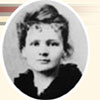

 |
|
 |
| . | Discovering Radium  I undertook next to discover if there were other elements possessing the same property, and with this aim I examined all the elements then known, either in their pure state or in compounds. I found that among these bodies, thorium compounds are the only ones which emit rays similar to those of uranium. The radiation of thorium has an intensity of the same order as that of uranium, and is, as in the case of uranium, an atomic property of the element.... During the course of my research, I had had occasion to examine not only simple compounds, salts and oxides, but also a great number of minerals. Certain ones proved radioactive; these were those containing uranium and thorium; but their radioactivity seemed abnormal, for it was much greater than the amount I had found in uranium and thorium had led me to expect. This abnormality greatly surprised us. When I had assured myself that it was not due to an error in the experiment, it became necessary to find an explanation. I then made the hypothesis that the ores uranium and thorium contain in small quantity a substance much more strongly radioactive than either uranium or thorium. This substance could not be one of the known elements, because these had already been examined; it must, therefore, be a new chemical element. I had a passionate desire to verify this hypothesis as rapidly as possible. And Pierre Curie, keenly interested in the question, abandoned his work on crystals (provisionally, he thought) to join me in the search for this unknown substance. We chose, for our work, the ore pitchblende, a uranium ore, which in its pure state is about four times more active than oxide of uranium. Since the composition of this ore was known through very careful chemical analysis, we could expect to find, at a maximum, 1 per cent of new substance. The result of our experiment proved that there were in reality new radioactive elements in pitchblende, but that their proportion did not reach even a millionth per cent! —from Pierre Curie pp. 96-98. |
 |